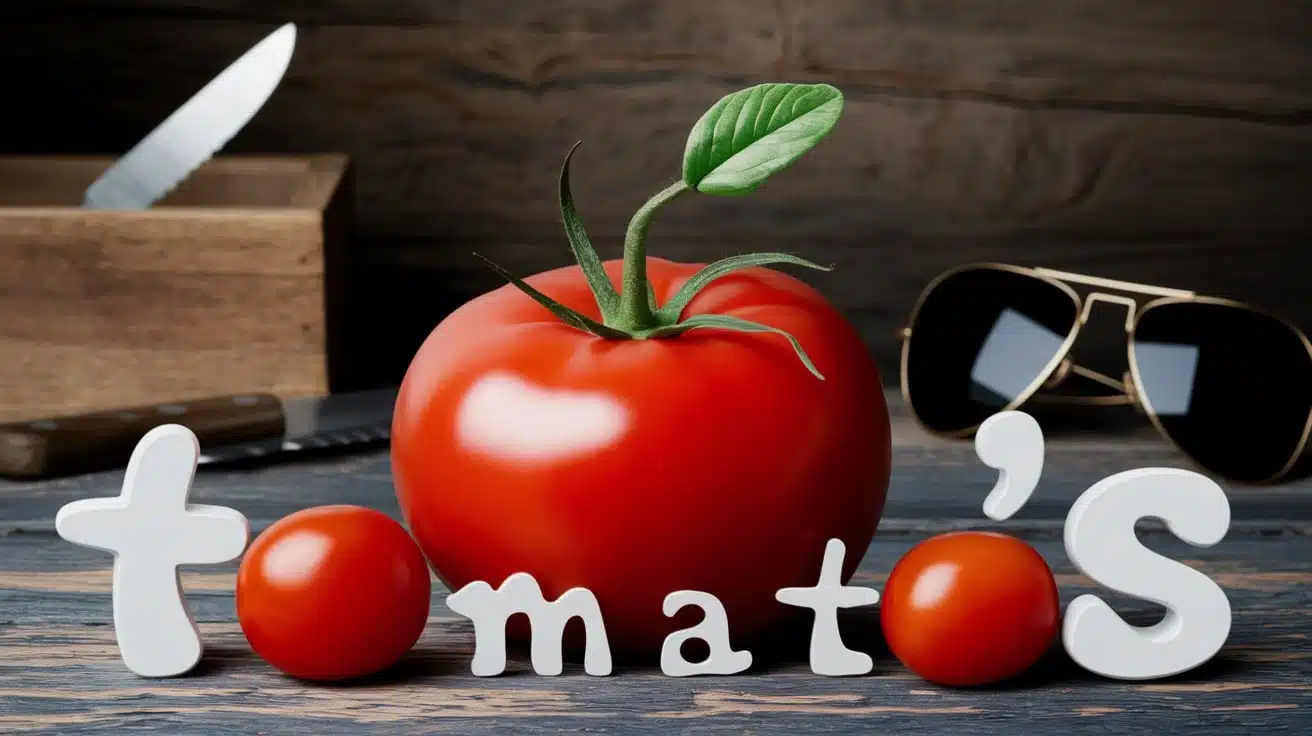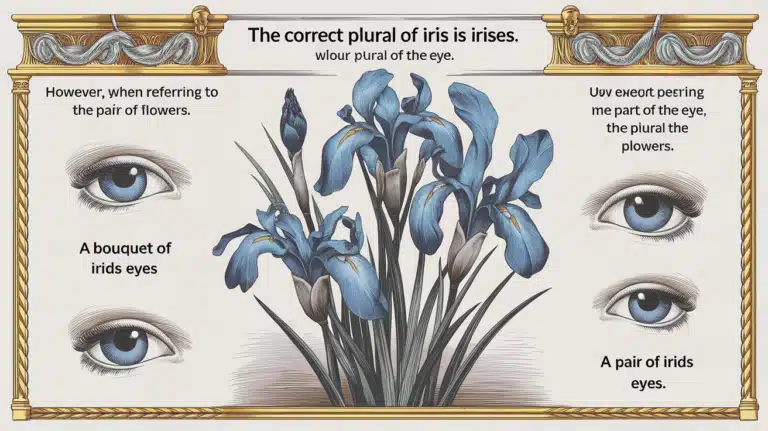Tomatoes or Tomato’s? the Correct Plural Spelling in English
When it comes to spelling in the English language, even simple words can cause confusion. One common example is the difference between “tomatoes” and “tomato’s.” This article will explain the correct spelling of the plural form, why the possessive form causes confusion, and how to use each one properly.
Whether you’re talking about heirloom tomatoes at the farmers’ market or using cherry tomatoes in your cooking, understanding the correct form matters. Knowing these details can also improve your writing skills in content writing and SEO, especially for an audience in the USA.
Understanding ‘Tomatoes’
In English, adding “s” or “es” is the usual way to make a word plural. However, for words like “tomato,” we use “es” at the end. This is why the correct plural spelling is “tomatoes” and not “tomatos.” The rule applies to many other words ending in “o,” such as “potatoes” and “heroes.” Remembering this can help you avoid incorrect spelling. The word “tomato’s” with an apostrophe should only be used to show possession. For instance, “the tomato’s color is red” is correct, but “the tomato’s are ripe” is incorrect. This slight change in punctuation makes a big difference in meaning and ensures that you use proper language skills in everyday conversation and writing.
Here is a table that shows the correct and incorrect forms:
| Word Usage | Correct Form | Incorrect Form |
|---|---|---|
| Plural | tomatoes | tomatos |
| Possessive | tomato’s | tomatoes’ |
| Singular | tomato | tomat |
Using the correct form in both American English and British English helps maintain clarity. Despite slight pronunciation differences, both dialects use “tomatoes” as the plural. This consistency is important, as using the correct form shows attention to detail in writing skills and content writing.
Grow Sessions and Drive Revenue for Your E-commerce Brand
Using correct spelling can also affect how audiences perceive your brand. In e-commerce, accurate and professional language boosts credibility. When you write descriptions for products like cherry tomatoes or other produce, using “tomatoes” instead of “tomato’s” shows attention to detail and enhances customer trust. Effective SEO also depends on correct keywords, which means proper grammar can contribute to higher search engine rankings.
Read More About : Leafs vs. Leaves: Which One to Use
Accurate spelling makes your content more accessible and reliable for readers, whether they are browsing a farmers’ market or reading a blog. Correct spelling also improves content writing for SEO, helping your brand grow in both reach and reputation.
Exploring Usage with Examples
Understanding examples helps clarify the difference between “tomatoes” and “tomato’s.” In everyday language, “tomatoes” refers to multiple tomatoes. For instance, “I bought three heirloom tomatoes for the recipe.” Here, “tomatoes” is correct. On the other hand, “the tomato’s skin is thick” shows the possessive form. The apostrophe in “tomato’s” indicates something that belongs to the tomato, like “the tomato’s color.” Each form is unique, and using them properly helps in developing strong English language skills.
Here’s a full-paragraph example showcasing these forms:
“I stopped by the farmers’ market to pick up fresh cherry tomatoes for a salad. The variety and diversity of heirloom tomatoes were impressive. Each tomato had its unique color and flavor. While admiring the tomato’s shape and texture, I couldn’t help but notice the importance of using the right plural form. People often confuse ‘tomatoes’ with ‘tomato’s,’ which can change the entire meaning. Using ‘tomatoes’ correctly in this sentence shows my attention to spelling and writing skills.”
Frequently Asked Questions
- Is ‘tomato’s’ ever correct in any context?
Yes, “tomato’s” is correct when showing possession, such as “the tomato’s taste.” - How can I remember the spelling of ‘tomatoes’?
You can remember by recalling that nouns ending in “o” often need “es” for the plural, as in “potatoes” or “heroes.” - Are there any exceptions to this rule in English?
Some words like “pianos” do not take “es,” so always double-check. - Can ‘tomatoes’ be used metaphorically?
Yes, “tomatoes” sometimes appears in idioms, such as “comparing apples and tomatoes,” to signify differences. - Is the pronunciation of ‘tomatoes’ different in various English dialects?
American English pronounces it as “to-may-toes,” while British English says “to-mah-toes.”
Conclusion
To sum up, using “tomatoes” as the plural and “tomato’s” as the possessive form is crucial for clear, professional writing. This distinction ensures that you avoid incorrect spelling and communicate effectively. Knowing these details is especially useful if you are passionate about gardening, cooking, or writing about diversity in produce. When shopping at a farmers’ market or describing heirloom tomatoes in recipes, correct spelling enriches the reader’s experience.
Frequently Asked Questions
- Why is English spelling sometimes confusing?
The English language has various rules and exceptions, making it complex but interesting to learn. - Can ‘tomatoes’ be shortened in any informal context?
Informally, people might say “toms,” but it’s best to stick with “tomatoes” in formal writing. - Is the plural ‘tomatoes’ used in both American and British English?
Yes, both American English and British English use “tomatoes” as the plural. - How do I know when to use ‘tomato’ vs. ‘tomatoes’?
“Tomato” is singular, while “tomatoes” is plural. Use “tomato’s” only to show possession. - Are there any fun ways to teach kids the spelling of ‘tomatoes’?
Spelling games and educational activities can make learning enjoyable. Try using rhymes or engaging content that involves writing and saying the word aloud.
By using correct spelling and understanding plural and possessive forms, you enhance your communication and language skills. These distinctions might seem small, but they make a big difference in ecommerce, content writing, and everyday conversation. Next time you’re at the farmers’ market or writing about cooking with cherry tomatoes, remember these tips for accuracy and professionalism.







